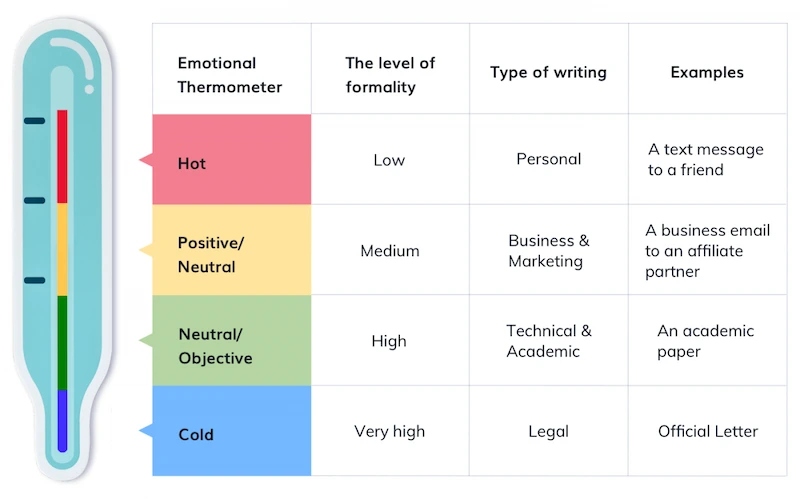
Understanding tone and its impact
Understanding tone and its impact is crucial in all forms of communication, especially in professional and interpersonal interactions. The tone of your message can significantly influence how it is received and interpreted by the audience. Here’s an overview of what tone is, its importance, and how it impacts communication:
What is Tone?
Definition: Tone in communication refers to the attitude or emotional quality conveyed by the words you choose and how you express them. It can be enthusiastic, serious, formal, informal, optimistic, pessimistic, or a myriad of other emotions and attitudes.
Verbal and Written Tone: In verbal communication, tone is conveyed through voice pitch, volume, and pace. In written communication, it is expressed through word choice, sentence structure, punctuation, and even formatting.
Importance of Tone
Creates First Impressions: Your tone sets the stage for how your message is perceived. It can shape the reader’s or listener’s initial impression of you and your message.
Conveys Emotional Context: Tone provides emotional insight into your message, which can be as important as the message itself. It helps the recipient understand your feelings and intentions.
Affects Comprehension: The right tone can make your message clearer and easier to understand, while the wrong tone can lead to misunderstandings or misinterpretations.
Builds or Damages Relationships: Consistent, appropriate tone can help build trust and rapport, while an inappropriate tone can damage relationships and hinder communication.
Impact of Tone
In the Workplace: A professional, respectful tone is essential in the workplace. It can affect teamwork, employee morale, and the effectiveness of communication in achieving business goals.
In Marketing and Public Relations: Tone helps in shaping brand identity and customer perception. It influences how audiences connect with the brand and respond to marketing messages.
In Personal Communication: Tone can significantly impact the quality of personal interactions, affecting empathy, understanding, and the strength of relationships.
In Cross-Cultural Communication: Different cultures have different norms and expectations regarding tone, making it crucial to be culturally sensitive in your communication style.
Tips for Managing Tone
Be Aware of Your Audience: Tailor your tone to your audience’s expectations and the context of your communication.
Consider Your Purpose: Align your tone with your communication’s purpose – whether it’s to inform, persuade, entertain, or console.
Reflect and Adjust: Be prepared to adjust your tone in response to feedback or the reactions of your audience.
Practice Empathy: Consider how your tone might be perceived by others. A tone that seems friendly to you might come across as overly casual or even unprofessional to someone else.
Understanding and managing the tone of your communication is key to effective interaction. It can enhance clarity, prevent misunderstandings, and improve the overall effectiveness of your message.